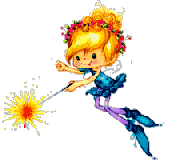
Jacob and Wilhelm Grimm
"Looking for a sweet, soothing tale to waft you toward dreamland? Look somewhere else. The stories collected by Jacob and Wilhelm Grimm in the early 1800s serve up life as generations of central Europeans knew it�capricious and often cruel. The two brothers, patriots determined to preserve Germanic folktales, were only accidental entertainers. Once they saw how the tales bewitched young readers, the Grimms, and editors aplenty after them, started "fixing" things. Tales gradually got softer, sweeter, and primly moral. Yet all the polishing never rubbed away the solid heart of the stories, now read and loved in more than 160 languages. " (National Geographic)
"Jacob and Wilhelm Grimm were scholars under patronage of various German princes (Jacob was librarian at Kassel and Göttingen), famous for their contributions to Indo-European and Germanic philology/linguistics. Their fairy-tale collection came in part because of this scholarly background; they were seeking data on the German language for their linguistic studies. They also were strongly influenced by feelings of national pride, especially following a period in which the culture of neighboring France had been enormously influential; by collecting examples of German folk literature, and emphasizing the uniquely German characteristics of that literature, the Grimms hoped to make a statement about the importance and value of German culture. The general view of their work is that �the Grimms were the first to collect and appreciate folk literature for its own sake and to record tales as ordinary people told them; they were the first to record the identity of the teller in their field notes (which has allowed some of their reputation to be undermined). The first translation of their work into English, by Edgar Taylor in 1823, almost instantly turned fairy tales into a respectable subject of antiquarian study and children's entertainment.
However, more recent scholarship has called into question the extent to which the Grimms actually carried out what they claimed to do in terms of folklore collecting techniques. Many of their sources were young, literate, middle-class women (one later married Wilhelm) - not the older, illiterate peasant storytellers of tradition. Many had backgrounds that included familiarity with French sources such as
They included a greater standardization of language, the elimination of sexually oriented elements, the addition of Christian elements, a consistent tendency to
change mothers into stepmothers, and in some cases an intensification of violent content. Unlike the fairy tales of Basile and Perrault, the Grimms' tales much more frequently feature genuine peasant heroes or heroines, and often show the royalty as duplicitous in relation to the lower classes, making them much more class-conscious than their predecessors. The Grimms' fairy tales also cover a wider spectrum, including trickster tales and folk tales that include no magic at all (e.g., "Clever Gretel") as well as holy legends. " (Northern.edu)
The stories of the Brothers Grimm differed from those of Charles Perrault in the manner described above. Rather than creating tales for the amusement and training of the young ladies of Louis XIV's court, they retold their tales in a manner which emphasized German nationalism. In addition, they "christianized" the stories and often made them more violent and less magical.
For more information on the Brothers Grimm, visit:
http://www.northern.edu/hastingw/grimms.htm
http://www.nationalgeographic.com/grimm/index2.html
Compare Jacob and Wilhelm Grimm to other authors on this site: